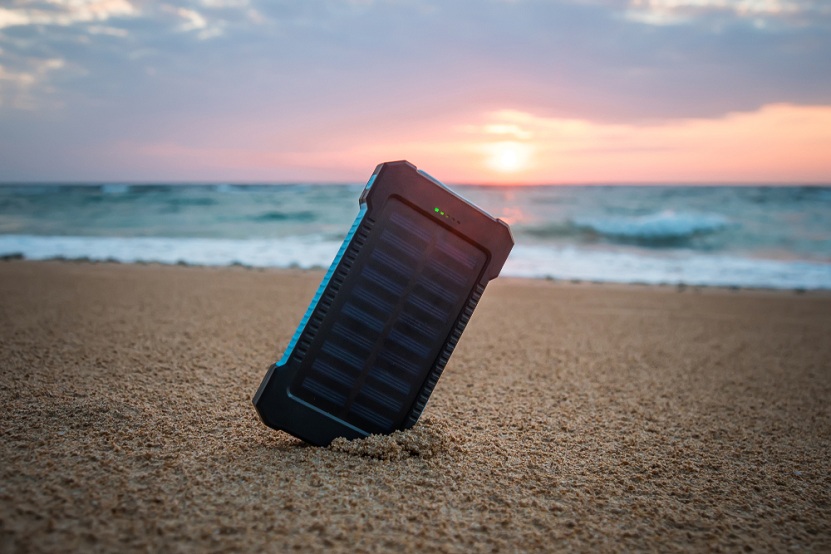For such compact and often easy to use devices, power bank solar chargers can sometimes be frustrating.
We’ve seen people complaining that the solar charging feature doesn't work or is too slow, or that the power bank doesn't charge their phone.
In this post, we tell you everything you need to know about power bank solar chargers, how they work, how to use them and how to troubleshoot yours when it misbehaves.
How Do Solar Power Banks Work?
Despite their name, most solar power banks do not rely primarily on solar power for charging. Because of the small size of the power bank, any solar panel attached to it is also small.
Power from the solar panel is too little to charge the power bank fast. Most power bank solar charges take days to charge with solar.
Power bank solar panels are typically added just for emergencies such as when you are outdoors or during a blackout.
Solar power banks work the same way as regular power banks, just with an attached solar panel for backup power.
How To Use A Power Bank Solar Charger
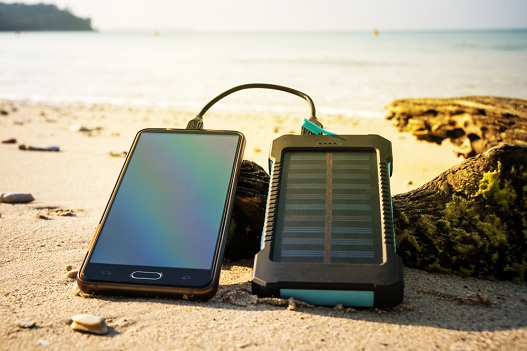
You use a solar power bank the same way you would a regular power bank.
When you first receive it, charge it to 100% via USB. You can plug the USB charger into a wall adapter or the USB port of a solar generator.
I do not recommend charging via solar for the first time as it will take too long.
Once the power bank is at capacity, you can plug in your phone and other devices into one of the USB ports.
Tip: Your power bank likely has LED indicators that will tell you when the battery is full. Check the user manual for guidance on what the various indicators mean.
Most power banks have multiple USB ports, so you can charge multiple devices at the same time.
The solar charging feature is handy and gives you free power, but save it for when you have no other choice.
It’s great if there’s no power at home or when you go camping or hiking. You can also use solar charging to keep the power bank topped up.
For instance if you are going hiking, you charge the power bank at home via USB then use the built-in solar panel when on the trail to extend the power bank’s battery life.
There are different kinds of solar panels on solar power banks. Some are integrated onto one side of the power bank. These solar panels are usually small and produce very little power.
Our favorite are solar power banks with foldable solar panels. These solar panels are bigger, but can be folded so they don't take up much space.
When charging via solar, simply unfold the solar panel and lay it on a surface or hang it from your backpack.
The wider surface area provides faster solar charging, though still nowhere near as fast as regular USB charging.
Troubleshooting A Power Bank Solar Charger: 5 Common Problems
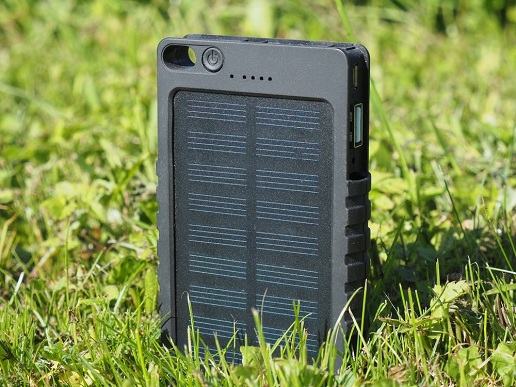
Here are the most common problems people experience with power bank solar chargers, and the best solutions for each.
1. Power bank doesn't charge with solar
Even though solar power banks charge very slowly via solar, you should still have some power coming in. The power bank indicator should light up, showing that solar charging is working.
If there is no charging indicator lighting up and the power bank doesn't seem to charge no matter how long you leave it in the sun, there’s likely a problem with the solar charging feature.
2. Power bank starts charging with solar then stops
One of the most common complaints we’ve come across regarding solar power banks is that they start charging via solar but then will stop for no reason.
The most common culprit is a cloud covering the sun. This stops the solar panel from working and it doesn't pick up again when the sun reappears.
The solution is to unplug the solar charger then plug it in again. But this usually happens with lower quality power banks and solar chargers.
3. Power bank charges very slowly
Solar charges take a long time to recharge a power bank. Depending on the size of the solar panel, charging time can be anywhere from several hours to a few days.
So be patient. But if the power bank seems to be charging too slowly, here are some things you can do.
4. Power bank doesn't charge my phone/device
Solar power banks can also have issues discharging power to a smartphone, tablet or some other device.
If you plug in your phone and it won’t charge, the first thing to check is the battery level on the power bank. There should be an indicator to show how much charge is remaining.
If the power bank is very low or empty, charge it for a while via USB then try plugging in your phone again.
If the power bank has plenty of charge, the next likely culprit is the cable you are using. Make sure it’s plugging in properly. It could also be damaged or counterfeit.
Only use high quality charging cable from reliable brands.
Here are other possible causes.
5. Power bank doesn't charge via USB
If your power bank won’t charge via USB, the first thing to check is the cable you are using. Make sure it’s the right cable and in good condition.
Test the power bank with a friend’s cable to rule out any other problem.
If the problem is not the cable, maybe there’s something wrong with the power bank’s internal circuitry. This can happen if the power bank has been knocked around a lot or has been exposed to moisture.
Send the power bank to the manufacturer or a repairer to have it fixed.
How To Maintain A Solar Power Bank
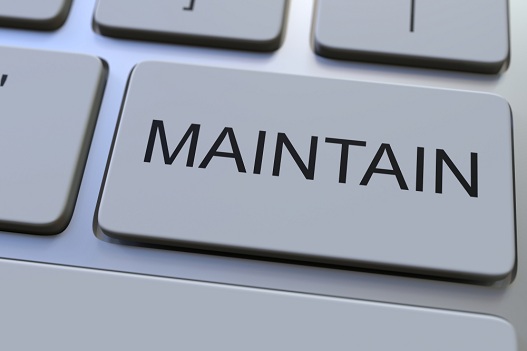
Solar power banks don't require much maintenance beyond taking good care of it.
Be careful not to drop it or hit it against objects especially if you travel often with the power bank. If the power bank did not come with a travel case, consider getting one.
Also be careful about exposing the power bank and solar charger to rain, snow, and extreme temperatures. These elements can damage the integrated solar panel or the power bank itself.
Check the manual for the recommended charging and operation temperature range. If it’s too hot or too cold, avoid charging and discharging the power bank.
Talking of temperature, limit how often you use pass-through charging. This is where you charge your phone with the power bank while the power bank is also charging.
It can make the battery heat up, significantly reducing its performance and lifespan.
Finally, always use the approved cables. Unless the manufacturer insists in the warranty on using their cables, you can often use third party cables but only from reliable brands.
Cheap cables don't last long and they can damage your solar power bank.
The Best Power Bank Solar Chargers
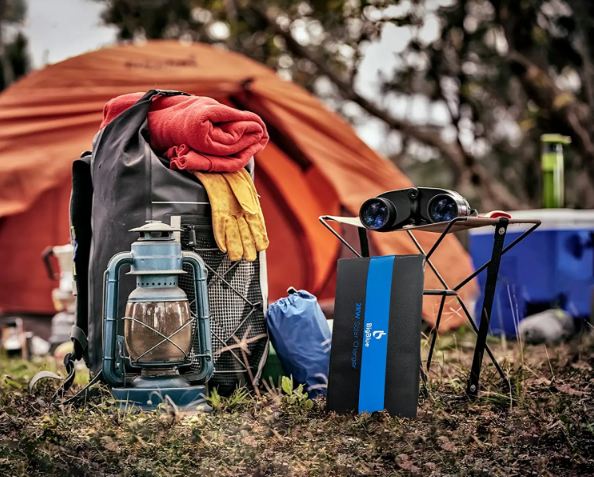
When shopping for a solar power bank, check the capacity of the battery. It’ll tell you how many times you can charge your phone and other devices before you need to recharge the power bank.
Also, check the size of the solar panel in watts. If you’ll be relying a lot on solar charging, make sure the power bank comes with a minimum 10W solar panel. 20W and above is even better.
You can also buy the power bank and solar charger separately. This lets you pick an adequately sized solar charger like the 40W X-Dragon one I mentioned above or this 28W one from BigBlue.
Check out our guide for solar powered phone chargers. It includes reviews of highly rated power bank solar chargers as well as stand-alone solar chargers (without a power bank).
You might also want to consider getting a portable solar generator instead of (or in addition to) a power bank.
A portable solar generator can charge your phone or power bank several times over and most can be connected to a large solar panel for fast solar charging.
Frequently Asked Questions
How do I know if my solar power bank is charging?
Most solar power banks have indicators that light up when it's charging. There’s usually a separate indicator for solar charging and another for USB charging.
A set of indicators will also show how much the battery has charged.
Refer to the product manual for guidance on how to read the indicators on your power bank.
Can I use pass-through charging with a solar power bank?
Most power banks allow pass-through charging. But it may not work well if you are charging the power bank via solar.
The small solar panels included with most power banks don't produce enough power to charge the power bank and your phone at the same time.
Pass-through charging works best when you are charging the power bank via USB.
Can you replace a solar power bank battery?
In most cases, you cannot replace the battery in a solar power bank. It’s also usually not worth it since the battery is the most expensive part of a power bank.
If the battery in your power bank is dead, getting a new power bank is the best option.
How long does it take a solar power bank to charge?
If you are charging it from a wall adapter or a USB port, it usually takes a few hours to recharge a power bank.
If you are using the onboard solar panel, it could take a couple of days or more depending on how much power the solar panel generates.

